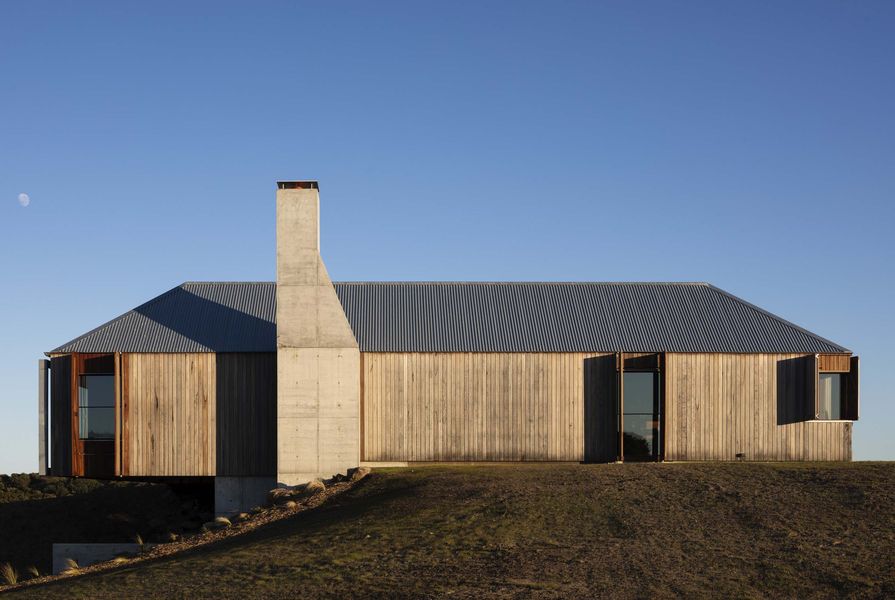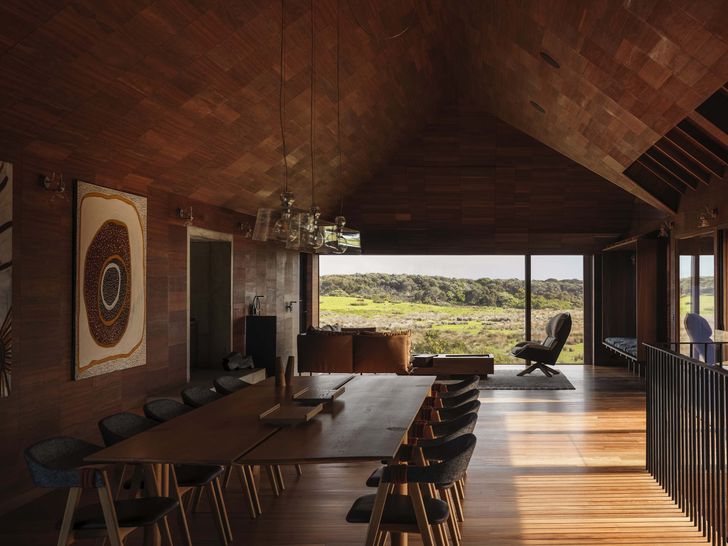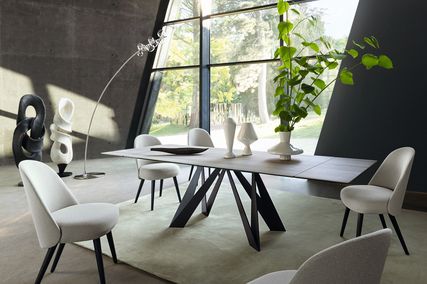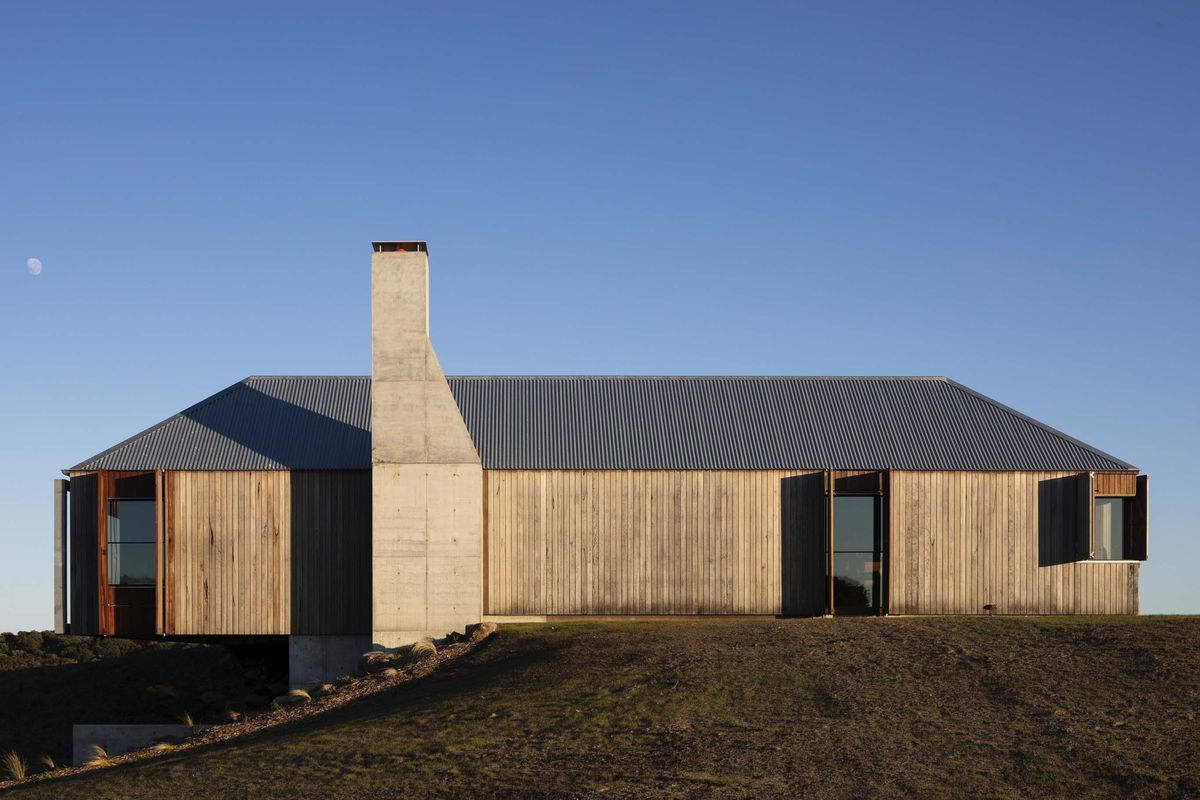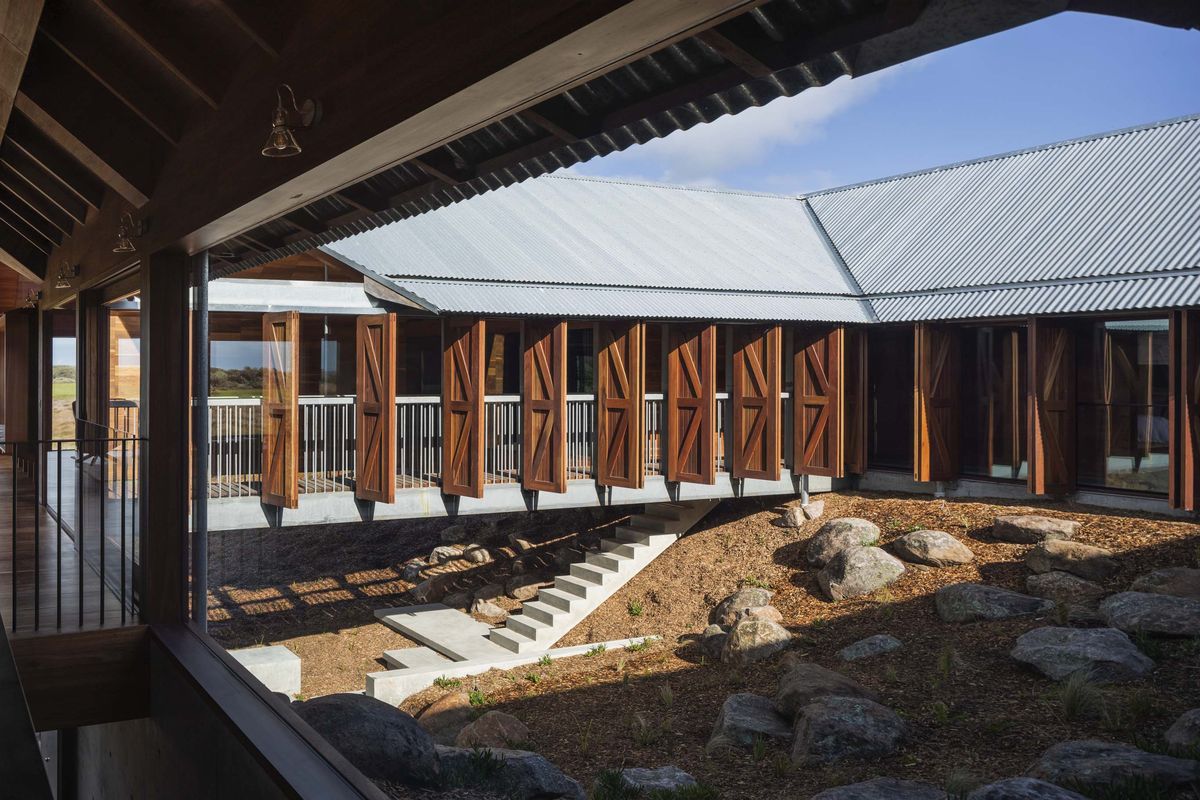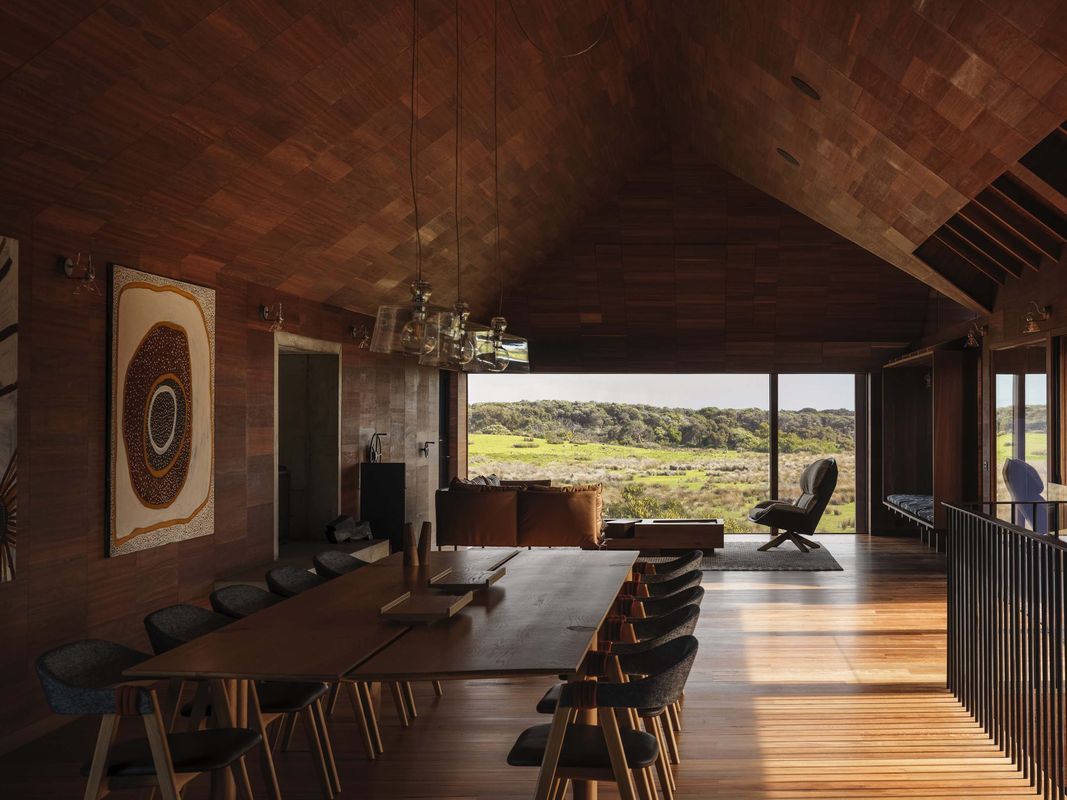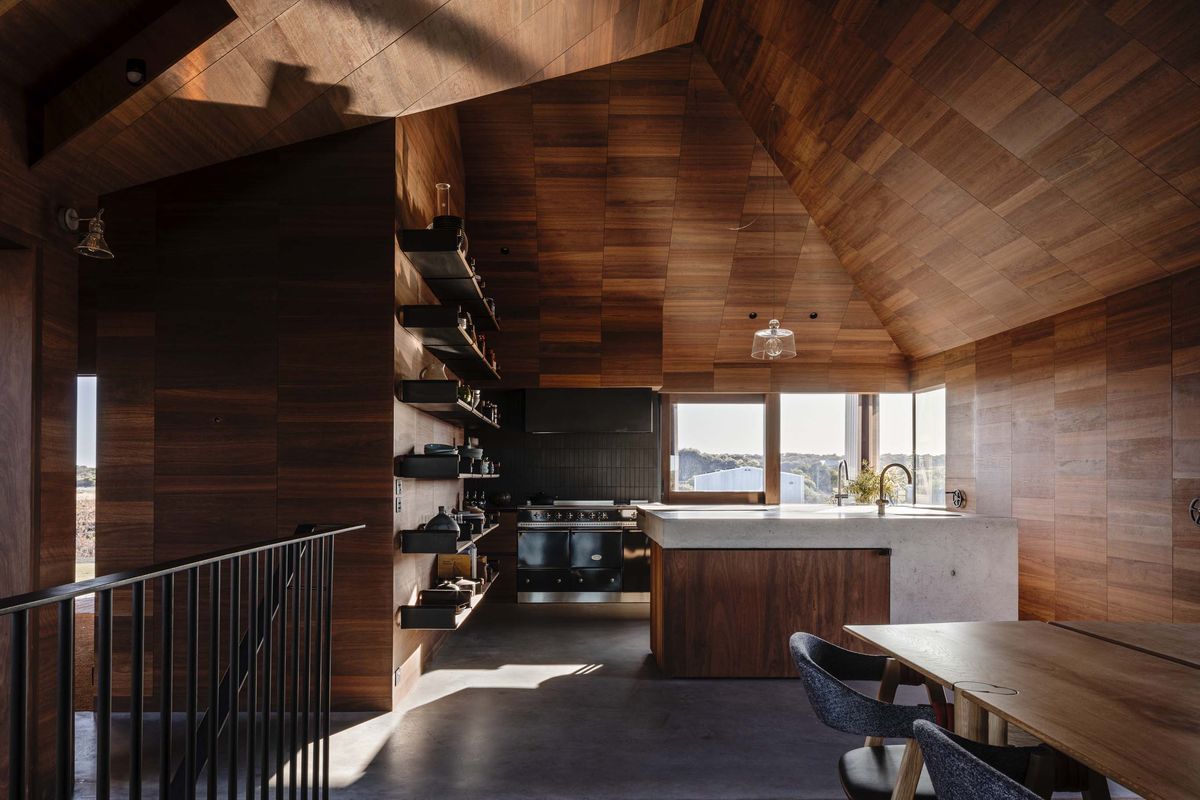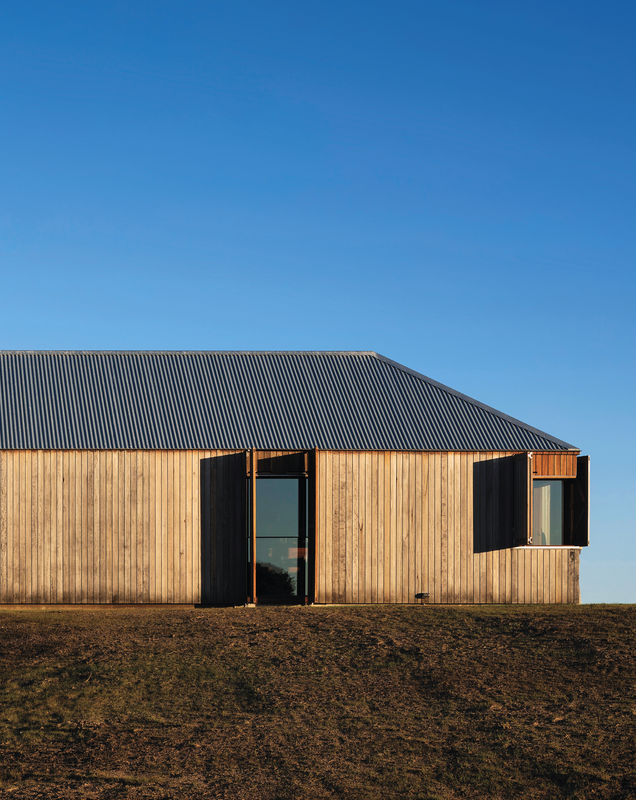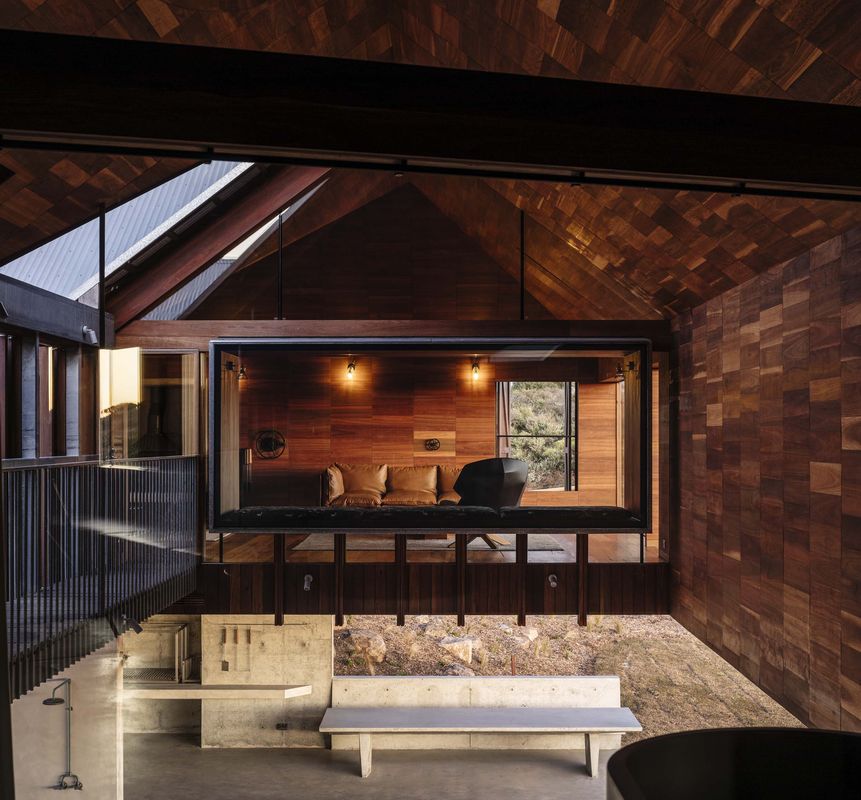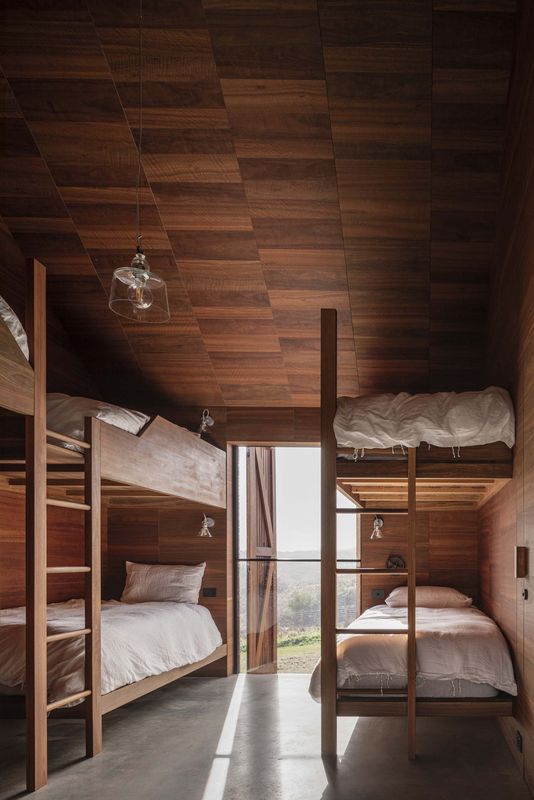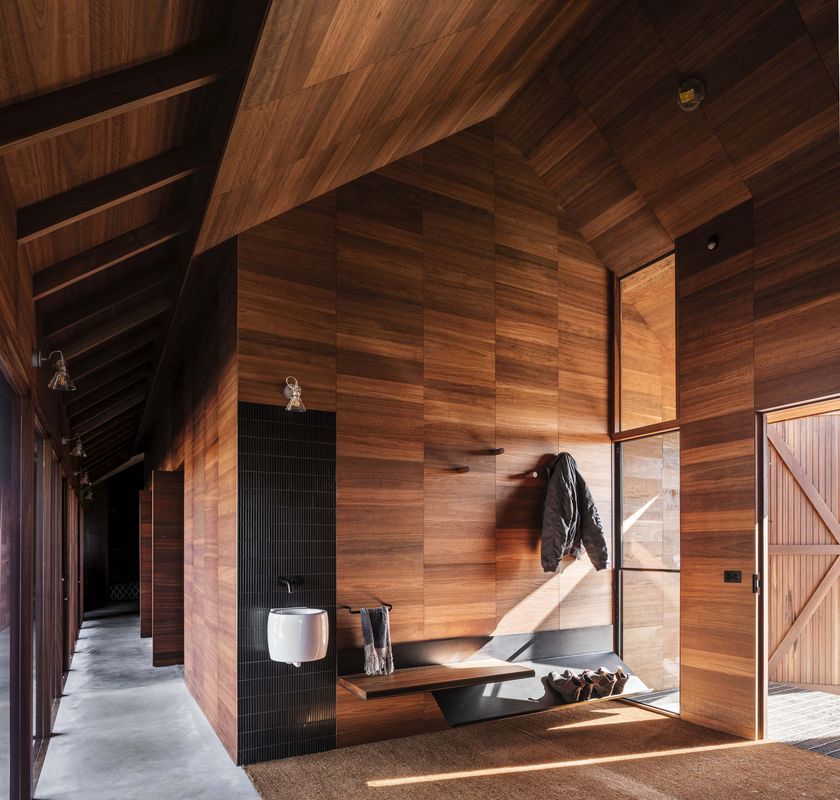When Gertrude Stein wrote “A rose is a rose is a rose,” it wasn’t because she’d mislaid her thesaurus. Stein’s work explored the conceptual power of poetry, and her message was that the name of a thing immediately summons the symbols and emotions we associate with it. If this review simply said “a house is a house is a house,” readers (and editors!) might feel a little cheated, but it would go to the heart of this conceptually rigorous work in regional Victoria by John Wardle Architects (JWA). With its instantly recognizable silhouette of wall-roof-chimney, Bass Coast Farmhouse is almost a cartoon of our collective image of “house.” But it joins a lineage of iconic houses that approach the Platonic ideal: from the classical typologies of Roman courtyard villas and Palladian palazzi, to more recent models such as Herzog and de Meuron’s House in Leymen (1997) and Glenn Murcutt et al’s evocations of Australian farm buildings.
In contrast to JWA’s normal additive design process, this house is exactly as it was proposed to be – from concept to detailed execution. The design is about the power of reduction and responds to another lineage: this is the clients’ third residential commission for the practice. The previous two, Fairhaven House (2012) and Freshwater Place Apartment (2016), were designed to embrace panoramic views. Instead, Bass Coast Farmhouse turns inwards as a hollow square, almost perversely denying long landscape views in favour of a farmyard court complex. There is good sense to this tactic: it’s stark country. Close to a rocky shoreline, it’s a perfect retreat for the surfing client and family. Entirely off-grid with extensive solar and water collection, this is a place to hunker down and relish self-containment.
A courtyard plan provides enclosure and protection on an exposed coastal site.
Image: Trevor Mein
Five rules govern the design, buttressing its ethos of empathy with this austere environment: constant enclosure; a single concrete floor; an undercroft defined by the rise and fall of the land; three types of windows; it is a farmhouse, pure and simple.
The plan is guided by the rules of enclosure and the fundamentals of the farmhouse (for example, orientation on the diagonal compass points, a kitchen overlooking the entry, double entry porches and no embedded garage). But the “ground rules” generate volumetric drama. Influenced by the work of architects Lina Bo Bardi and Paulo Mendes da Rocha in Sao Paolo, JWA has built down, not up, using the undercroft as a potent circulation experience. The floor plate follows the slope of natural ground level: while the house sits on terra firma on most of its four sides, the courtyard plunges toward an underbelly that “leaks out” below a double cantilever toward the ocean. Two stairs connect back to the main level. If that all sounds complicated (as it would have been to build), the result feels entirely resolved and thrilling in the experience.
Screens and shutters are moved by handwheels, turning their operation into theatre. Artwork: Timothy Cook.
Image: Trevor Mein
The rules of reductionism and repetition discipline the building formally and economically. Extraneous elements like gutters are detailed into apparent oblivion, materials restricted to a tight palette of concrete, spotted gum and galvanized roofing; and “a window is a window is a window.” The result is a mute (but familiar) form in the landscape that opens to reveal a highly articulated interior.
Bass Coast Farmhouse is undeniably generous in scale, but intelligent handling controls its functionality around the courtyard. Embracing the symmetry of the square, the design clusters sleeping and living into wings that can be closed or opened to the inner or outer light as required. The contrast of dark, dappled or illuminated corridors makes a virtue of the longer journeys. A bridge allows the clients to cut between the living area and main bedroom and enjoy the spatial drama of the inside-outside void. There’s a wicked confusion of design references in the detailing – are we in an elevated sheep run or Scarpa’s Castelvecchio? – and a teasing visual proximity of main bathroom to lounge. It’s the one moment when the gabled roof is broken to flood the void with sunlight, and a large window alcove invites contemplation of this cultivated abyss.
The main bedroom at the western corner of the house enjoys panoramic views of the landscape.
Image: Trevor Mein
Slowness is deliberately built into this house. Just opening it from its dormant state takes meditative (and physical!) effort. The shutters are operated by bespoke steampunk-esque handwheels that mechanically generate electricity to open them: the slow exposé awakens the house and self to place. The living room is subtly attuned to temporal rhythms, seasonal and historic: fifteen metres long, with different furniture settings for a winter hearth or summer lounging space, it’s a latter-day Elizabethan Long Gallery.
The house is an evolved vocabulary of design gestures: timber linings and joinery that blur into architectural intarsia; surprise practical wet areas; draped steel shelves and seamless cupboards. As ever in Wardle’s work, there’s a delight in the kinetics of daily life – from animating the exterior envelope, to the theatrical descent of a concealed television or the neat tuck of concertina flyscreens. Is God, or the Devil, in the detail? Certainly the practice is committed to this kind of dazzling resolution and has courted the best in the construction industry to achieve it.
Awaiting occupation by its owners, the farmhouse feels expectant, immaculate and archetypal, even as it begins to gently weather into its setting. This house sits confidently between past and future heritages in residential design. In John Wardle’s assessment, it is perhaps the acme of the practice’s domestic work. With such purity of concept and execution, it belongs in the lexicon of Australian architecture. But without doubt this memorable project demonstrates the essence of “house,” and that a paradigm is a paradigm is a paradigm …
Products and materials
- Roofing
- Lysaght Custom Orb.
- External walls
- Spotted gum tongue-and-groove cladding from Matthews Timber in WOCA exterior oil; concrete by Insitu in Class 2 off-form finish.
- Internal walls
- Spotted gum timber veneers from Timberwood Panels in Osmo Polyx matt; plasterboard in Dulux ‘White Duck Quarter’; Inax Fuka and Yohen Border tiles from Artedomus.
- Windows
- Custom solid spotted gum with fixed Viridian Energytech clear glazing by Overend Constructions and Pickering Joinery; Aneeta black anodized aluminium sashless windows with Viridian Lightbridge clear glazing; custom solid spotted gum timber shutters by Overend Constructions
- Doors
- Custom spotted gum timber (solid and veneer) by Overend Constructions.
- Flooring
- Machine-burnished concrete topping screed slab; solid spotted gum tongue and groove from Matthews Timber; coir matting by Birrus Matting Systems.
- Lighting
- Produzione Privata Aquatinta and IPY from Ornare; Lampada from Artedomus; various from Light Project.
- Kitchen
- Blanco Claron sink; Sussex mixer; Fisher and Paykel fridge/freezer and dishwasher; Condair rangehood; Lacanche oven and cooktop; custom shelves and concrete island by Overend Constructions; custom steel benchtop by Sharpline.
- Bathroom
- Sussex tapware; Concrete Nation bath; Agape wall basin; Set in Steel monolithic concrete vanity; Sepp concrete basin from Wood Melbourne; Overend Constructions basin frame and steel rod towel rail.
- Heating and cooling
- Sanden Eco Plus hot water system; Daikin bulkhead split system from Griepink and Ward; Cheminees Philippe fire box from Wignells; in-slab heating by Nissle Eichert Heating.
- External elements
- Overend Constructions custom steel and concrete features; The Pool Company custom pool with Sunbather automatic cover.
- Other
- Bespoke timber elements by Overend Constructions and Charles Sandford Woodturning and Joinery; custom cushions by Martel Upholstery.
Credits
- Project
- Bass Coast Farmhouse
- Architect
- Wardle
Melbourne, Vic, Australia
- Project Team
- John Wardle, Diego Bekinschtein, Megan Fraser, Andy Wong, Luca Vezzosi, Adrian Bonaventura, Maya Borjesson
- Consultants
-
Builder
Overend Constructions
Electrical services and solar PV system Burra Electrical
Engineer OPS Engineers
Geotechnical and bushfire consultant Ark Angel
Landscaping Jo Henry Landscape Design
Mechanical services Griepink and Ward
Sustainability consultant Greensphere Consulting
- Aboriginal Nation
- Bass Coast Farmhouse is built on the land of the Boon Wurrung people of the Kulin nation.
- Site Details
-
Site type
Coastal
Site area 660975 m2
Building area 375 m2
- Project Details
-
Status
Built
Design, documentation 10 months
Construction 24 months
Category Residential
Type New houses
Source

Project
Published online: 6 Dec 2022
Words:
Rachel Hurst
Images:
Trevor Mein
Issue
Houses, December 2022

